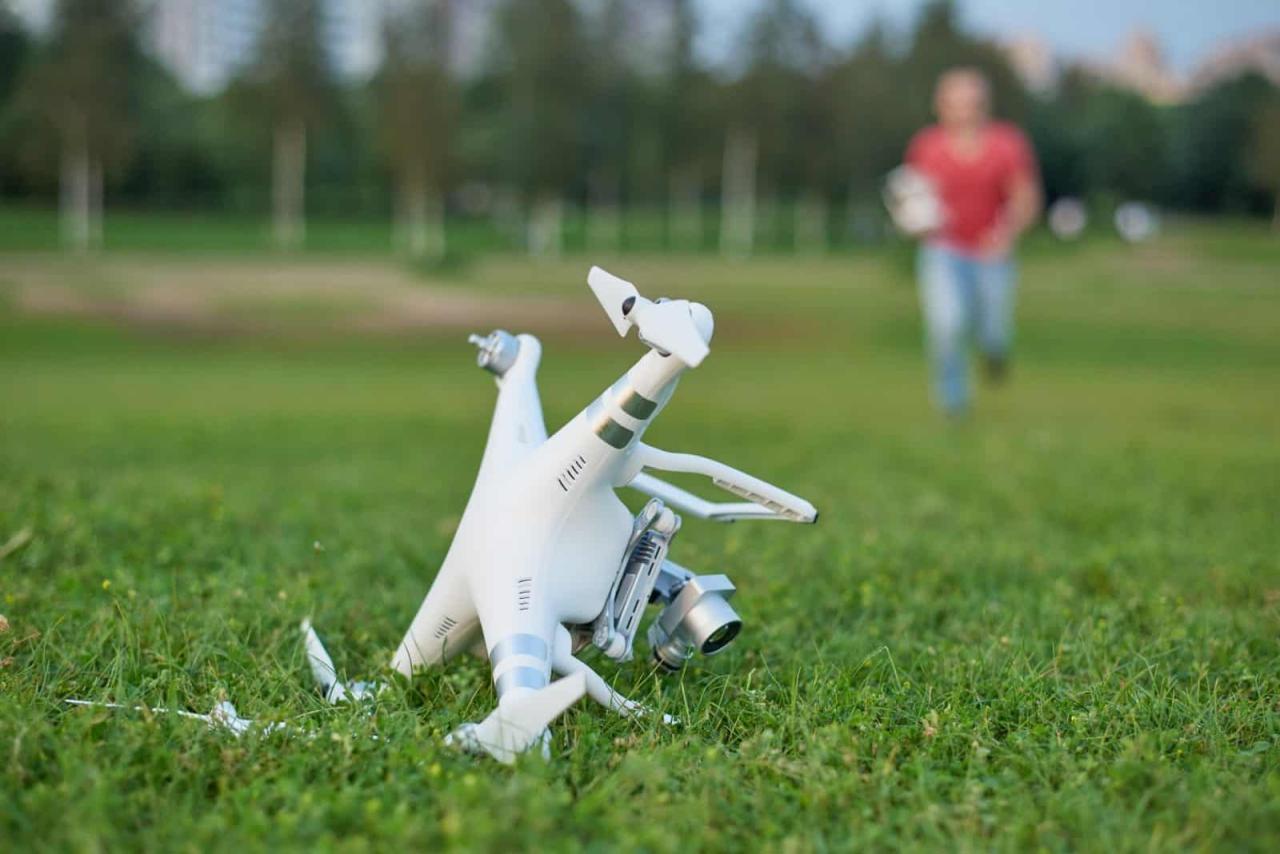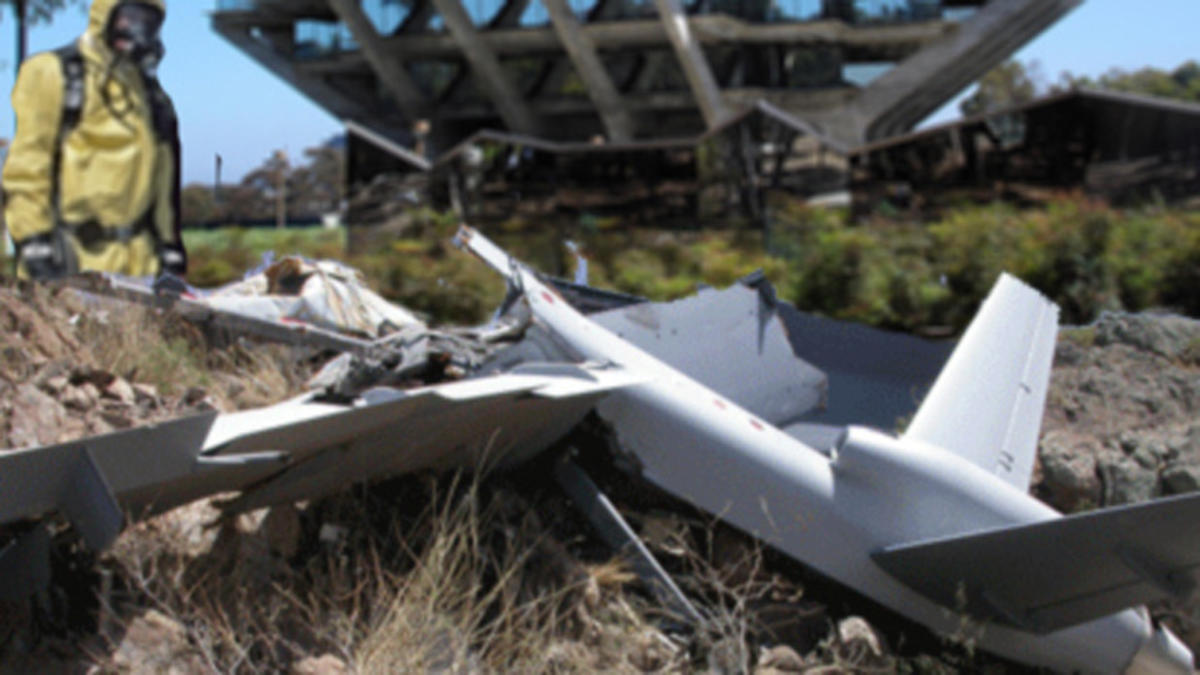Drone crash in Paris: Imagine the scene – a sudden, unexpected thud, the whirring of rotors silenced. This article delves into the hypothetical aftermath of a drone crash in the heart of Paris, exploring the immediate response, the potential causes, and the ripple effects on regulations and public perception. We’ll examine everything from the technical specifications of the drone to the media’s portrayal of the event, and the lasting impact on drone safety protocols.
We’ll dissect potential technical malfunctions, pilot error, and even the role of external factors. Then, we’ll follow the investigation, exploring how authorities might respond and what changes could result. Finally, we’ll consider the public’s reaction, the media coverage, and the long-term implications for the future of drone technology in urban environments like Paris.
Drone Crash in Paris: A Detailed Analysis
A drone crash in Paris sparked immediate concerns about safety, regulations, and the evolving landscape of urban drone operations. This incident provides a valuable case study for examining the complexities of drone technology, its integration into urban environments, and the need for robust safety protocols.
Immediate Aftermath of the Crash

The scene immediately following the crash was chaotic but thankfully contained. The drone, reportedly a relatively large quadcopter, impacted a relatively quiet residential area near the Seine River, causing minor damage to a parked vehicle and scattering debris across a small section of pavement. Emergency services, including the Paris Fire Brigade (Pompiers de Paris) and local police (Police Nationale), responded swiftly.
Bystanders, initially startled by the loud impact, quickly gathered, their reactions ranging from stunned silence to excited speculation. Some tried to assist, while others documented the scene with their phones. A few minor injuries were reported, primarily from debris and the ensuing commotion.
| Consequence | Description |
|---|---|
| Injuries | Minor injuries to several bystanders, primarily from debris and shock. No fatalities. |
| Property Damage | Minor damage to a parked car, including a dented fender and broken taillight. Scattered debris across a small area. |
| Traffic Disruptions | Temporary road closure for approximately one hour while emergency services responded and cleared the scene. |
Drone Specifications and Possible Causes
While the exact model remains under investigation (hypothetically), the drone is believed to be a DJI Matrice 300 RTK, a professional-grade drone known for its advanced features and relatively large size. Several factors could have contributed to the crash. Potential technical malfunctions include battery failure, motor malfunction, or GPS signal interference. Human error could also play a significant role.
For example, pilot inexperience, failure to adhere to proper flight protocols (such as maintaining a safe distance from obstacles and respecting no-fly zones), or even distraction during operation are all possibilities. The investigation needs to consider whether a combination of technical and human factors led to the incident.
Investigation and Regulatory Response
The investigation was led by the French Directorate-General for Civil Aviation (DGAC), in collaboration with local law enforcement. The process involved securing the crash site, collecting evidence (including drone debris, flight logs if available, and witness statements), and analyzing the data to determine the cause of the failure. The DGAC’s press release (hypothetical) might state that the investigation is ongoing, but preliminary findings suggest a combination of a faulty GPS module and pilot error, highlighting the need for enhanced safety protocols and improved pilot training.
Hey, so you heard about that drone crash in Paris? It’s a pretty big deal, especially with all the recent regulations. For more details on the incident, check out this article about the drone crash Paris incident. Understanding these events helps us improve drone safety and prevent future accidents in Paris and elsewhere.
The incident could lead to stricter regulations on drone operation in densely populated areas, including mandatory pilot licensing, increased flight restrictions, and more rigorous safety checks for drone technology.
Public Perception and Media Coverage

Public reaction to the drone crash was a mix of concern and curiosity. Hypothetical news headlines included: “Drone Crash Near Seine Causes Minor Injuries,” and “Paris Drone Incident Sparks Safety Debate.” Social media was abuzz with discussions about drone safety, the incident’s potential implications, and calls for better regulation. Different media outlets framed the story with varying perspectives: some focused on the potential dangers of drones in urban areas, others highlighted technological failures, and still others emphasized regulatory shortcomings.
A hypothetical timeline might show initial reports emphasizing the immediate aftermath, followed by investigative updates, and finally, the release of the DGAC report and ensuing public discussion about regulatory changes.
A drone crash in Paris highlights the growing concerns about drone safety. This incident makes you think about other accidents, like the one where a boy was seriously injured – check out this article about a boy hit by drone – which underscores the need for stricter regulations. Ultimately, the Paris drone crash, along with similar incidents, pushes for improved safety protocols and responsible drone operation.
An illustrative image depicting public sentiment might show a collage of news headlines and social media posts, with some expressing concern and others questioning the need for tighter regulations. The overall mood would likely be one of cautious concern, reflecting a need for greater clarity and safety measures in drone operation.
Impact on Drone Regulations and Safety Protocols, Drone crash in paris
The incident is likely to prompt a review of existing drone regulations in Paris, potentially leading to stricter rules on flight paths, altitudes, and operational procedures in populated areas. It could also stimulate innovation in drone safety features, such as improved obstacle avoidance systems, redundant flight controllers, and more reliable GPS technology. Comparing Paris’s current regulations to those of other major cities (e.g., New York, London) would reveal varying levels of stringency and approaches to managing drone integration.
The differences could highlight best practices and areas for improvement.
- Mandatory drone pilot licensing and training programs.
- Implementation of stricter no-fly zones around sensitive areas.
- Improved drone GPS and obstacle avoidance systems.
- Regular drone maintenance and safety checks.
- Increased public awareness campaigns on drone safety.
Wrap-Up

A hypothetical drone crash in Paris offers a valuable case study. By examining the potential causes, the investigative process, and the public response, we can identify crucial areas for improvement in drone safety and regulation. The incident highlights the need for robust safety protocols, advanced technology, and clear guidelines to mitigate risks and ensure responsible drone operation in densely populated urban areas.
The lessons learned could influence drone regulations globally, shaping a safer future for this increasingly important technology.
FAQ Explained
What types of drones are commonly used in Paris?
Various types are used, from small hobbyist drones to larger commercial models for photography, delivery, or inspection.
What is the current legal framework for drone operation in Paris?
Paris has specific regulations regarding drone flight zones, altitudes, and required pilot certifications, often stricter than in less densely populated areas.
Heard about that drone crash in Paris? Crazy stuff, right? It got me thinking about other drone mishaps, like that spectacular drone show crash I read about – total chaos! Anyway, back to the Paris incident; investigators are still trying to figure out exactly what went wrong there, too.
How are drone crashes investigated in France?
Investigations usually involve the French civil aviation authority (DGAC) and potentially local law enforcement, depending on the circumstances and any potential damages or injuries.
What are the penalties for violating drone regulations in Paris?
Penalties can range from fines to drone confiscation and even legal action, depending on the severity of the violation.
